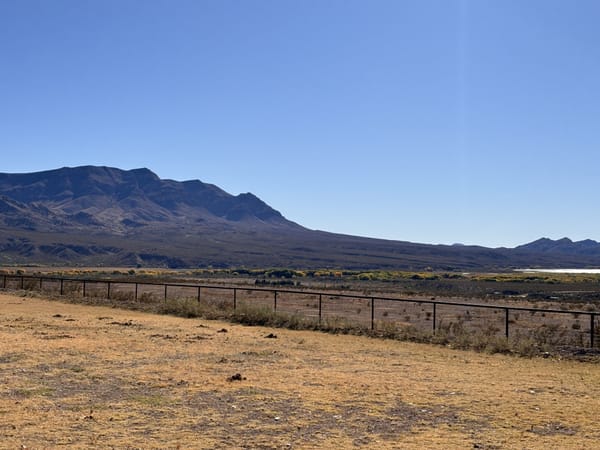Trade Alert: FIT trade, FSLR update, energy analysis
$FIT crushed 15% as they announce a new product at CES. I’d have thought the market was going to focused mostly on its upcoming Feb 1 earnings report but with the panicky sell-off in the name here on this new product release, there’s some digging to be done here in search of a trade-able opportunity.
Frankly, I think new Fitbit Blaze smart watch looks pretty cool. The market doesn’t like that the company is bringing a pure Apple Watch competitor to market, but I think it’s a great idea and something I’ve been watching for as I’ve noted that I wanted to see if $FIT can turn itself into its own platform with critical mass. The Blaze battery lasts five days and nights vs the frustratingly one day life of a the Apple Watch.
The risk that Fitbit is taking is that it’s inclusion of a few killer apps in its Smart Watch, including phone calls, texts, emails, calendar syncing and playing music. Will most people want to use Pinterest and Scutify and Twitter on their smartwatches like they can with Android and Apple Smartwatches or are a few killer apps for the smart watch like Fitbit plenty of “smartness?” Good questions.
I’m surprised at how harsh this intraday panicky sell-off in Fitbit has become and I’m inclined to do a little bit of nibbling here today. Fitbit is one of my smallest positions and won’t be much bigger as I’m only scaling into a smallish 1/6th-sized position near $26 per share. I don’t have to try to nail an exact bottom here and I don’t have to risk a bunch of money on the trade/investment in Fitbit. I do think the company had a bang-up fourth quarter and holiday season and that the new smartwatch is promising.
Let’s talk energy and First Solar. Last year at this time, oil was still above $50 a barrel and I was still very bearish on energy in general:
I could see this energy cycle playing out as follows: 1. Supplies from all the tens of billions of dollars invested in energy infrastructure keep coming online this year and into next. 2. Then, maybe 3-5 years of continued underinvestment in new wells and new supply will mean there supply side is finally stabilized. 3. Meanwhile, consumers will buy bigger vehicles and otherwise learn to ignore energy prices since they’re low, which will cause demand to rise over the next 3-7 years. 4. Somewhere in the next 5-7 years then, we’d expect to see the bottom of the energy cycle turn and prices will rise. 5. Could take twice as long as all my above estimates to play out. UPSHOT: A ‘long time’ when it comes to seeing the energy cycle bottom and turn higher for investors could be 5-15 years out.
At the time, that comment drew comments like this: “Wow! That is the absolute longest I could see it playing out.” Nowadays, a year later with oil at $35 a barrel and “supplies from all the tens of billions of dollars invested in energy infrastructure having kept coming online for the last year” such a bearish energy timeline wouldn’t draw the same kind of response.
I do think there’s going to be some stabilization and perhaps even a dead cat bounce or two in commodity and energy prices in 2016. I still lean towards avoiding trying to game a bottom in the energy cycle, but I am digging into some energy sector stocks with very strong balance sheets with an eye towards adding a new energy name or two to the portfolio.
Speaking of strong balance sheets, you guys know how much I’ve always focused on strong balance sheets in finding great stocks that we can own for a long time. I always talk about how companies that have billions of dollars of net cash and little or no debt have the financial flexibility that others with net debt don’t have.
Just a couple weeks ago I wrote: “I’ll be doing more work on this subject all weekend and into year-end as I’m trying to get ahead of its possible ramifications and figure out the best way to profit from this coming implosion of trillions of dollars of commodity and energy-related corporate debt. This whole analysis underscores my approach to avoiding highly-leveraged balance sheets and finding stocks that have lots of financial flexibility and net cash on the balance sheet.
My lone energy stock, First Solar, has billions in net cash on its balance sheet. The stock sold off yesterday after issuing guidance for 2016 but has bounced back this morning some. I’ve owned this stock for two and a half years now as we’ve had some nice luck trading it using my tranche buying style where I scale in and build up the size of my long-term positions on weakness and trim to take some of those profits off that table when they spike. I’d done both recently with First Solar, as I’d added another tranche of FSLR around $40/share when the DJIA was down 1000 and hit its August lows and thenI’d trimmed those same shares near $60 a share back in October as I’d noted for Trading With Cody subscribers.”
Cody back in real-time. This morning, First Solar is at new highs yet again as Goldman Sachs upgraded FSLR to a buy rating. The commentary from the report read like something you’ve seen in Trading With Cody commentary a million times including in the above quote. Bold, mine:
Goldman Sachs said that First Solar has best-in-class execution and the strongest balance sheet in the sector.
“We believe this positions the company better than peers to navigate short-term tightening in financial conditions and maintain a relatively low cost of capital — while at the same time providing financial flexibility to fund projects off its balance sheet or be opportunistic via M&A to add to project pipeline/backlog,”
That’s Meanwhile, Goldman actually downgraded the rest of the solar sector to Neutral from Attractive due to the rising cost of capital in an industry that heavily relied on debt and equity raises in 2015.
Financial flexibility only comes when you have lots of cash in the bank and little or no debt. Interest rates are still at historic lows, but they are likely to rise in coming years. The energy sector at large will have a hard time getting access to capital until oil gets back above say $50 a barrel. I’m tempted to take another small tranche of profits on First Solar today with the stock above $71 a share, but I do think this name has more upside as a relatively “safe haven” in the energy sector as money managers flock from highly levered and otherwise weak energy stocks to First Solar in coming weeks and months.




